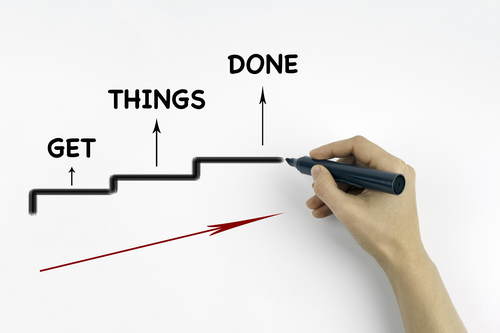Mastering communication and productivity in today’s fast-paced and interconnected world is pivotal to personal and professional success. Among the many transformative methodologies that stand out are Crucial Conversations and Getting Things Done, or GTD. Integrating the principles of these approaches into your daily life will help you navigate complex situations, build meaningful relationships, and achieve your goals with greater efficiency and clarity.
Understanding Crucial Conversations
A “crucial conversations” is a talk where the stakes are high, people’s opinions differ, and emotions run high. Whether you are negotiating a business deal, resolving a personal conflict, or giving constructive feedback, these conversations often determine outcomes that significantly impact your life.
Key Principles of Crucial Conversations:
Start with Heart: Focus on your desires and stay true to your values.
Master Your Stories: Separate facts from emotions to understand your perspective and others’ viewpoints.
State Your Path: Express your thoughts clearly, encouraging dialogue and mutual respect.
Make It Safe: Foster an environment where everyone feels comfortable sharing their opinions.
Explore Others’ Paths: Be curious about others’ perspectives and create a dialogue that leads to shared understanding.
When applied consistently, these principles give you the power to transform challenging conversations into opportunities for collaboration and understanding. The ability to navigate high-stakes discussions effectively enhances both personal and professional relationships.
Getting Things Done: The Productivity Blueprint
GTD, developed by David Allen, is a potent task management, project management, and prioritization system. The main aim is to clean up mental clutter and free you to focus on what matters. By capturing everything that calls for your attention and organizing it well, you can enter a state of “mind like water,” where you respond to challenges calmly and efficiently.
The GTD Workflow:
Capture: Collect everything that has your attention—ideas, tasks, commitments—in a trusted system. This can include to-do lists, notes, or digital task management tools.
Clarify: Process these inputs by determining their significance for the next required action and deciding whether they are actionable, conferred, or delegated.
Organize: Categorize tasks and projects into actionable lists such as “Next Actions,” “Waiting For,” or “Someday/Maybe.”
Reflect: Review your system regularly to align with your goals and ensure nothing is overlooked. Weekly reviews are a cornerstone of GTD.
Engage: Take action confidently, focusing on tasks that align with your priorities and available resources.
GTD transforms chaos into control, allowing you to navigate life’s demands with precision. By systematically organizing your commitments, you free up enough mental bandwidth to engage in creative and strategic pursuits.
The Synergy of Crucial Conversations and GTD
Crucial Conversations and Getting Things Done offer a complete approach to success. These two methodologies complement each other in several ways, providing a compelling way to approach personal and professional goals.
1. Improved Communication
GTD will help you prioritize and clarify your thoughts, better preparing you for crucial conversations. For example, before discussing a sensitive topic, use GTD’s “clarify” step to outline your key points and desired outcomes. This preparation ensures you approach the conversation with confidence and focus.
2. Reduced Stress
The efficiency of task management using GTD reduces mental clutter and enables you to tackle complex discussions calmly. With your mind free from clutter, you can focus entirely on the conversation.
3. Better Decision Making
GTD’s clarity means that during critical interactions, you will not be diverted by what matters in life. You can engage in complex conversations without losing track of what matters to you.
4. Stronger Relationships
The mutual respect and understanding fostered by crucial conversations build trust, which in turn enhances teamwork and collaboration. When combined with GTD’s organizational principles, you can ensure that commitments made during conversations are followed through effectively.
Practical Tips for Success
Prepare Thoroughly
Apply the steps of GTD: capture and clarify before actually having an important conversation. Write down what’s going on in your head, your desired outcomes, and even the facts that support your ideas.
Preparing reduces anxiety helps focus on core issues rather than peripheral or even useless discussion.
Apply Active Listening
Be interested in the other person’s opinion, which will create rapport and trust. Active listening entails making eye contact, nodding in acknowledgment, and asking clarifying questions. It is a vital tool to understand other people’s perspectives and find common ground.
Psychological Safety
This will form a safe environment for successful crucial conversations. Avoid judging, and show empathy, allowing people to open up more by being heard and valued for their honest opinions.
Harness Technology
Digital tools can be used to both improve GTD and crucial conversations. Use task management applications such as Todoist or Trello for commitment organization and collaboration tools such as Slack or Zoom for effective communication.
Invest in Continuous Learning
Books such as Crucial Conversations by Patterson et al. and Getting Things Done by David Allen provide more depth into these methodologies. Attend workshops or online courses to hone your skills further.
Review and Reflect
After a crucial conversation, take some time to review what worked well and what could be done better. Similarly, regular GTD reviews ensure you stay on track with your goals and commitments.
Real-World Applications
Workplace Scenarios:
Use GTD to manage projects and deadlines to be always prepared for team meetings.
Use crucial conver wesations techniques to resolve disagreements with colleagues or give good feedback.
Personal Life
Use GTD to organize family commitments and personal goals.
Address sensitive topics with loved ones using open and respectful communication.
Leadership
Leaders can use GTD to manage their responsibilities efficiently and crucial conversation skills to inspire and motivate their teams.
